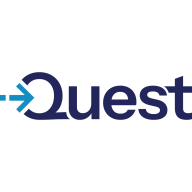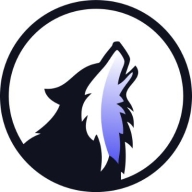

KACE Systems Management Appliance and Vicarius vRx are both in the IT management category. KACE seems to have the upper hand in comprehensive endpoint management, while Vicarius leads in vulnerability management efficiency.
Features: KACE Systems Management Appliance integrates well with multiple management tools, offering a centralized solution for asset and patch management, and is appreciated for its scripting and inventory management capabilities. Vicarius vRx excels in vulnerability management, automating patching, prioritizing vulnerabilities, and providing unique features like patchless protection, offering a single pane for effective threat management.
Room for Improvement: KACE Systems Management Appliance needs better scalability and a more user-friendly interface for non-technical staff, with refinements in patch management. Vicarius vRx could improve reporting, simplify patch deployment, and enhance integration with network devices, facing challenges with its login process and multi-tenant portal.
Ease of Deployment and Customer Service: KACE offers versatile deployment options, including on-premises and hybrid solutions, with excellent customer service and technical support noted for quick resolutions. Vicarius vRx, being cloud-based, allows easy deployment in cloud environments, with responsive support services, although it could improve login processes and management tool intuitiveness.
Pricing and ROI: KACE Systems Management Appliance offers competitive pricing with flexible licensing that benefits larger deployments, leading to a quick ROI through labor savings. Vicarius vRx, while more expensive, justifies its cost with advanced features, though it may be costly for smaller setups. Both enhance operational efficiency and threat management, offering significant ROI.
The return on investment is seen in the quick access to information, good inventory management, and efficient systems management.
I would rate the customer support for Quest KACE Systems Management Appliance (SMA) as a 10.
The customer service is very good, providing quick customer support in Spanish.
Their support is very good, and they respond quickly.
During the POC and the implementation, they were very available and made their best efforts to help us.
Whenever I've contacted them, they respond promptly with a callback or by email.
The product is very scalable as it supports 10,000 thousand endpoints with just one appliance.
We have outgrown the size of one KACE appliance and are now running two.
It is very simple; you just script it, and then the computers connect themselves.
When we attempted to scale this and update 200 systems, that just locked it.
We have some clients with up to a thousand agents.
There are some issues that they do not even know how to fix at this point.
I would rate the stability of Vicarius vRx ten out of ten.
There are some issues like high CPU usage during updates, but these were fixed.
Currently, we have to go into each org to deploy applications when we need them all across the university.
The user interface needs improvement as customers have mentioned they do not like the interface since it is not an SMA-based interface.
I am pretty sure that the tool works great when it comes to Windows, but when you are in an environment that has different flavors of Linux at different version levels, that may pose an issue.
We have the ability to search across the network for all switches, routers, and printers, but some devices might be outdated and have vulnerabilities.
Enhancing Vicarius vRx with improved third-party integrations, like notifications for external systems, and increased cloud integration for richer instance information, would be valuable improvements.
The pricing is in the middle range of the market, not too expensive but not the cheapest either.
My experience with pricing, setup cost, and licensing for Quest KACE Systems Management Appliance (SMA) is that, hands down, it beat all of the others in simplicity and pricing.
It was very cheap.
In the past, Vicarius vRx was cheap, but now they have adjusted their pricing policy, resulting in higher renewal costs.
From a pricing perspective, Vicarius was cheaper compared to other competitors.
Scripting has saved us hundreds of hours over the years when patching these vulnerabilities compared to how we did it before.
The most valuable features include simplicity, which makes systems management easier and faster, especially for device management.
It's a valuable tool that reduces tension between IT and security teams by providing time to properly install patches.
The system prioritizes vulnerabilities, identifying high, medium, and low risks, allowing us to focus on high-risk applications.
The most valuable feature is the system's ability to provide information about open CVEs and how it compares the local version with available updates.
| Product | Market Share (%) |
|---|---|
| Vicarius vRx | 3.5% |
| KACE Systems Management Appliance (SMA) | 3.9% |
| Other | 92.6% |


| Company Size | Count |
|---|---|
| Small Business | 8 |
| Midsize Enterprise | 20 |
| Large Enterprise | 15 |
| Company Size | Count |
|---|---|
| Small Business | 11 |
| Midsize Enterprise | 7 |
| Large Enterprise | 3 |
KACE Systems Management Appliance offers integration capabilities, efficient image deployment, and comprehensive asset management. It supports centralized management across diverse devices and locations, simplifying IT processes and enhancing security.
KACE Systems Management Appliance provides single-pane visibility for endpoint management, mass software deployment, automated patch management, robust scripting, and detailed inventory tracking. It streamlines IT management and improves cyber-security compliance through remote software updates and centralized IT request handling. Despite struggles with scalability and the need for interface improvements, it enables efficient device imaging, script automation, and network management through detailed reporting. Organizations find it effective for software deployment, asset management, and endpoint monitoring, serving thousands of IoT devices and desktops.
What are the key features of KACE Systems Management Appliance?In healthcare, KACE Systems Management Appliance is used for maintaining device compliance and security standards. Educational institutions benefit from its capabilities to manage large numbers of endpoints across campuses. In finance, it aids in strict compliance requirements through automated patch management and detailed reporting. Retail sectors leverage its asset management features to streamline operations across numerous locations.
Vicarius vRx automates patching and vulnerability mitigation with patchless protection, appreciated for effective third-party app patching and vulnerability prioritization. The platform offers streamlined management via intuitive dashboards, consolidating vulnerability discovery and remediation.
Vicarius vRx streamlines the patching and vulnerability mitigation process, delivering automation through patchless protection. It is favored for its ability to handle third-party applications effectively while providing vulnerability prioritization. The platform's intuitive dashboards allow for efficient management, consolidating vulnerability discovery and remediation efforts. Users note the robust scripting engine and supportive community as significant assets in mitigating critical threats, reducing manual effort and remediation time. Despite the strengths, enhancements in areas like automating patchless solutions, simplifying the login process, and refining networking vulnerability scanning capabilities are needed. The patch update process, reporting, and scripting functionalities require improvements. Name changes have resulted in some confusion, and additional filtering options are desired, along with better cloud integration and system feedback on update statuses. Logging options and mobile device management support are sought after by organizations.
What are the key features of Vicarius vRx?Managed service providers utilize Vicarius vRx for compliance needs, focusing on PCI and HIPAA requirements, vulnerability management, and patching. They use it extensively for patch management, covering both Microsoft and third-party updates, and for centralized update management. It aids in achieving visibility and automation, ensuring quick application of necessary patches across numerous assets while enhancing cybersecurity effectiveness with its network functionality and audit compliance features.
We monitor all Patch Management reviews to prevent fraudulent reviews and keep review quality high. We do not post reviews by company employees or direct competitors. We validate each review for authenticity via cross-reference with LinkedIn, and personal follow-up with the reviewer when necessary.